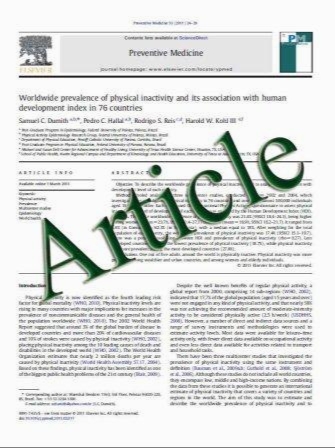Diagnosis and treatment of osteoporosis before and after admission to long-term care institutions
- نوع فایل : کتاب
- زبان : انگلیسی
- مؤلف : L. A. Beaupre & S. R. Majumdar & S. Dieleman & A. Au & D. W. Morrish
- چاپ و سال / کشور: 2011
Description
Summary Bisphosphonate treatment rates were examined before and after admission to long-term residential care. Bisphosphonate treatment rates were low (16%) preadmission but doubled after long-term residential care admission (30%). Men were very undertreated for osteoporosis, while a history of falls with injury was not associated with treatment. Introduction To determine the rates and independent correlates of bisphosphonate treatment in elderly residents before and after admission to long-term care (LTC) institutions. Methods Information was collected from records of 421 residents of four LTC institutions in Edmonton, Alberta, Canada. Osteoporosis-related diagnoses, treatments, and risk factors including falls in LTC and any adulthood fractures were abstracted. Osteoporosis was defined by physician diagnosis or documented fractures of the hip, spine, or upper extremity. Multivariable analyses were undertaken to determine factors independently associated with bisphosphonate treatment. Results Mean age was 84±8 years and 290 (70%) were female. Overall, 142 (34%) had previous fractures, 170 (41%) had physician-diagnosed osteoporosis, and 227 (54%) residents met the study’s clinical definition of osteoporosis. Of those with osteoporosis, 44 (19%) were men. Before admission, 36 (16%) patients with osteoporosis were treated with bisphosphonates; after admission another 31 (14%) were started on bisphosphonates by LTC physicians. Women were far more likely than men to start bisphosphonate treatment [30 (97%) women vs. 1 (3%) man, adjusted odds ratio (aOR)=9.20 (95% confidence intervals 1.2,70.5)]. Falls with injury were common [72/227 (31%)] but not associated with bisphosphonate treatment (adjusted p value>0.5). Conclusion Rates of pre-admission bisphosphonate treatment were low, but did double after LTC admission. Women were almost ten times more likely to start bisphosphonate treatment than men, although one fifth of those with documented osteoporosis were men. Although falls cause most fractures, a history of falls with injury was not associated with bisphosphonate treatment. Our findings suggest that targeting men and residents with falls for treatment with bisphosphonates might be warranted.
Osteoporos Int DOI 10.1007/s00198-011-1582-5 Received: 19 October 2010 / Accepted: 1 February 2011


